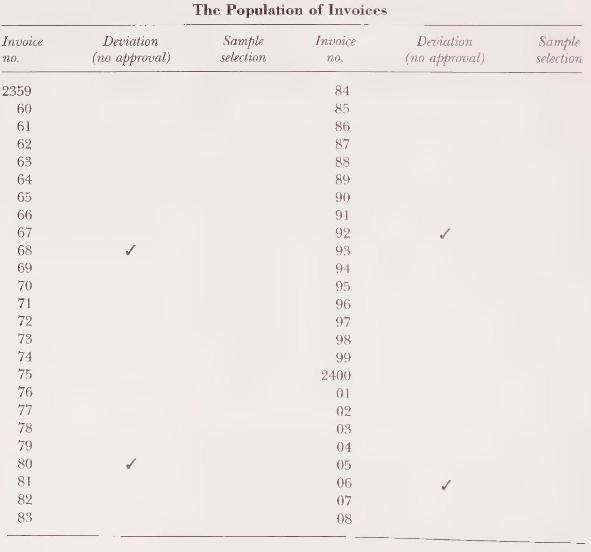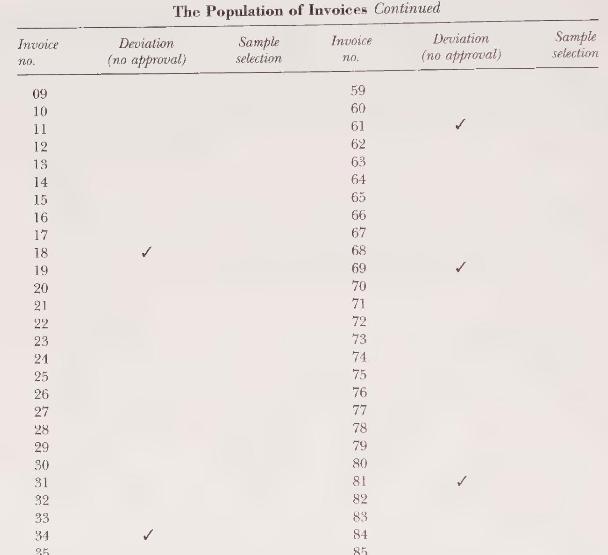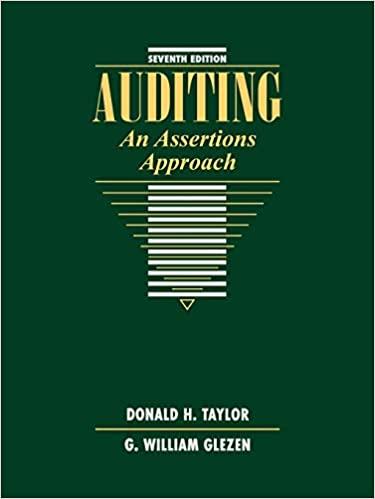While obtaining an understanding of internal control for a client's system of cash disbursements, an auditor decided
Question:
While obtaining an understanding of internal control for a client's system of cash disbursements, an auditor decided to test the controls by taking a sample of vendor invoices and examining them to determine whether they were properly approved for payment. Therefore, a deviation would be an invoice with no evidence of approval prior to payment.
The population of invoices is shown below and on pages 319-320. A check mark in the deviation column beside an invoice number means that no approval was indicated for that invoice, and, if the auditor includes that invoice in his or her sample, a deviation will be detected. (There are deviations in 22 of the invoices, but the auditor would not know this.)
Assume that the auditor decides on a risk of assessing control risk too low of 10 percent, a planned tolerable rate of 8 percent, and an estimate of the deviation rate in the population of 2 percent. The sample size is 50 .
Required:
a. Assume that non statistical sampling is used and that a systematic sampling technique is employed. Using a one-digit number from the table of random numbers in Appendix B as a starting point (number 4 means invoice no. 02362), list the 50 invoice numbers that would be examined. Indicate how many deviations were found, the sample deviation rate, and whether you consider the sampling results to be acceptable or unacceptable. Given the deviation rate in the population, did the sampling results lead you to the correct conclusion?
b. Assume that statistical sampling is used and that random number sampling is employed. Using the table of random numbers, list the 50 invoice numbers that would be examined. Indicate how many deviations were found, the sample deviation rate, the achieved tolerable rate, and whether you consider the sampling results to be acceptable or unacceptable. Given the deviation rate in the population, did the sampling results lead you to the correct conclusion?


![]()


Step by Step Answer:

Auditing An Assertions Approach
ISBN: 9780471134213
7th Edition
Authors: G. William Glezen, Donald H. Taylor





